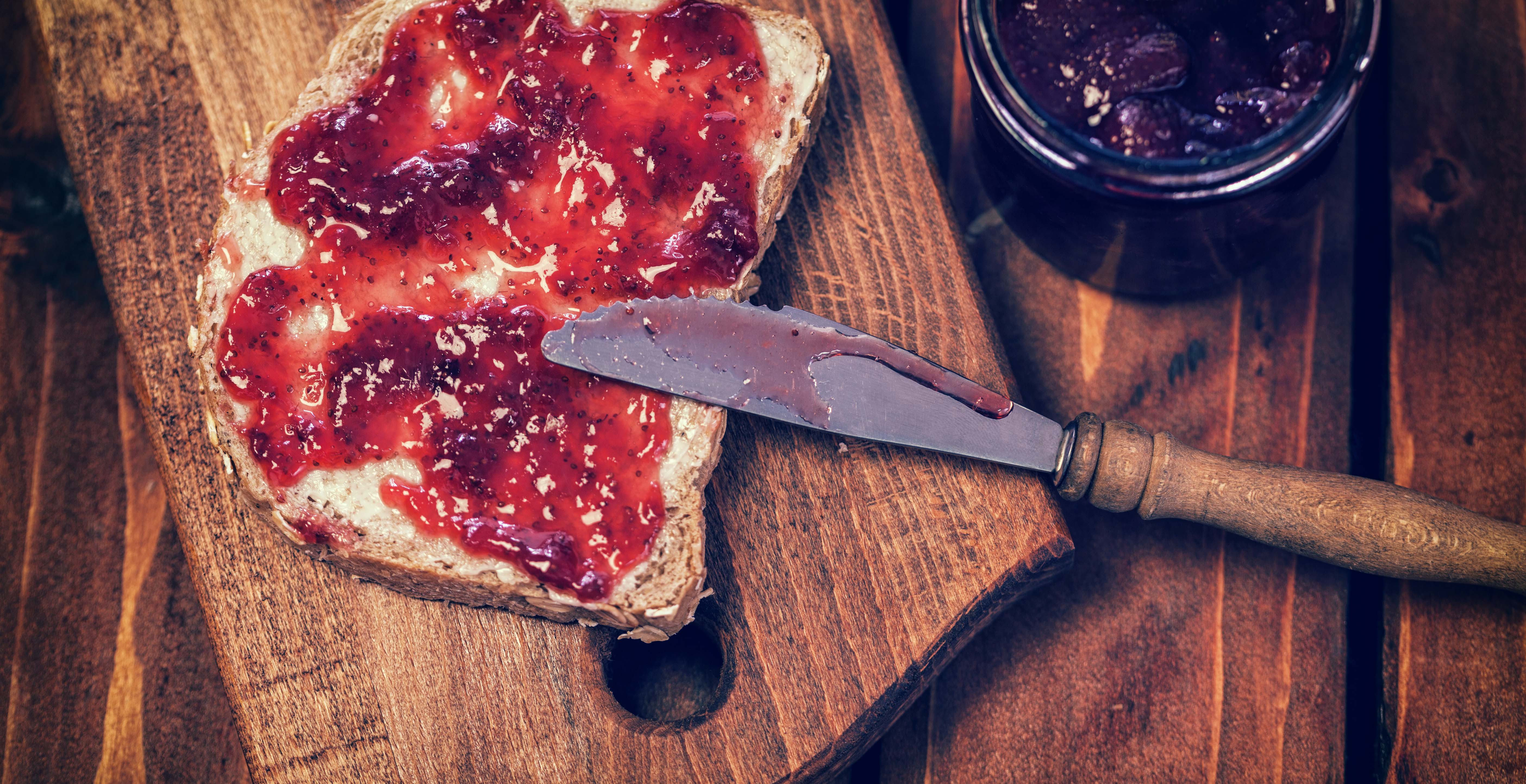The Skinny on...Preserves, Jams, Jellies


A quick breakfast of toast and jam sounds simple enough, right? Well, a visit to your typical supermarket might make you think otherwise. What’s the difference between jam, jelly, fruit spread, spreadable fruit, and fruit butter? Most are fat-free but are sweetened with everything from corn syrup to fruit juice concentrate to artificial sweeteners. What’s the best choice for healthy living? We demystify the terms.
What’s it all about
The typical serving size for most of these products is one tablespoon, an amount so small it offers negligible nutritional benefits, so if it’s fibre and vitamins you’re after, eat an actual piece of fruit. However, calories-per-serving is relatively low, often less than 100 calories, so jams and their brethren are a low-impact way to boost flavour and add sweetness to many foods.
As a general rule, jams, jellies and the like with the most calories almost always contain both corn syrup and cane sugar, followed by those sweetened with just cane sugar or fruit juice (including fruit juice concentrate and extract).
Artificially sweetened preserves have the fewest calories, but also the least pleasing flavour and mouth feel. Your best strategy, then, is to study the cheat sheet below to decide what texture and flavour you are going for and how you want to use it, then look at nutritional labels and ingredient lists before buying anything.
Preserves
Broadly speaking, preserves are fruits, and sometimes vegetables, prepared for long-term storage. Fruit preserves are made from fruit juice, pulp, skin and seeds, sweetener, and pectin (a natural gelling agent), and have lots of body and texture. Berries and stone fruits are typically used to make preserves, although ginger preserves — a sweet/spicy spread good with scones or roasted meats — is a classic English preparation that can also be found in many supermarkets.
Jams
Considered the same as preserves by the USDA, jams contain both fruit juice and pieces of fruit (pulp, skin and seeds) and typically are less chunky than preserves, while still offering plenty of texture. Jams contain pectin and can be made with a wide range of sweeteners, including artificial ones). Apricot and plum jam can be combined with mustard and chopped garlic and used as seasoning paste for roasted pork.
Jelly
This clear fruit spread is made from fruit juice, some kind of sweetener (including artificial ones), and pectin. Concord grape jelly is the classic, but mint jelly (great with roasted lamb) and spicy jalapeño jelly (excellent in vinaigrettes) are also widely available.
Fruit spread/ spreadable fruit
The name fruit spread or spreadable fruit may suggest a product that’s sugar-free, but you’d best study the ingredient list before tossing a jar into your shopping cart. Many fruit spreads and spreadable fruit contain cane sugar, and those sweetened with fruit juice extract may be higher in calories than you think. Most are made with whole fruit and pectin, so expect a similar texture to jam, with a mouth feel that varies depending on the sweetener used. Specialty spreads worth seeking out at a gourmet food shop are ginger spread, a sweet/spicy paste of ginger and sugar that is equally at home in a vegetable stir-fry or spread onto a piece of angel food cake. Adriatic fig spread (sweetened with sugar) is a stunning companion to cheese and cured meats.
Fruit butter
The good news about luscious fruit butters is that they have the velvety mouth feel of butter without any actual butter! Pears, apples, apricots and even pumpkin are cooked down to pulp (pectin is rarely added) and passed through a sieve, sweetened with either sugar or juice and sometimes enhanced with warm spices (particularly cinnamon). In terms of calories, they fall in the middle of the range (anywhere from 20 to 35 per tablespoon), but offer the most flavour for your calorie buck. Prized for their deep caramelized flavours, fruit butters are fantastic with hot cereal and pancakes. They also enhance any muffin recipe calling for plain applesauce, and make a great topping for a low-fat holiday cheesecake.
Beyond Basics
Chutney
Think of chutney as spiced jam. This tangy Indian condiment is made from fruit (mango is a classic), sugar, vinegar and spices, and ranges in heat from mild to hot. Chutneys are great with curries, but are also a flavourful, fat-free way to enhance any roast meat, spice up a turkey sandwich or add punch to your bagel (by mixing with fat-free cream cheese).
Curd
These tangy, sweet spreads are made with lemon (or other citrus), sugar, eggs, butter and sometimes pectin. They are delicious (think lemon squares) but relatively high in calories. If you’re feeling indulgent, a little goes a long way: curds make a great tangy, lower-fat alternative to traditional frosting on cupcakes.
Marmalade
Made with whole citrus fruit, including the rind, these have a slightly bitter edge. Traditionally sweetened with sugar, fruit juice-sweetened varieties are easy to find at most supermarkets. Mix marmalade with lemon juice and wine for a tangy poultry marinade. Or combine with mustard for a ham glaze.
Mostarda di frutta
A sticky, extremely sweet Italian condiment of candied fruit suspended in a mustard-spiked syrup. Traditionally served with boiled meats, it can also be a sweet foil to strong cheeses.
Quince paste
A firm, reddish paste made from quince and sugar and widely eaten in Spain and parts of Latin America. Also known as membrillo, it has a mellow sweetness with nice floral notes and is classically served with sliced Manchego cheese (a great source of calcium and protein); no cracker necessary.
